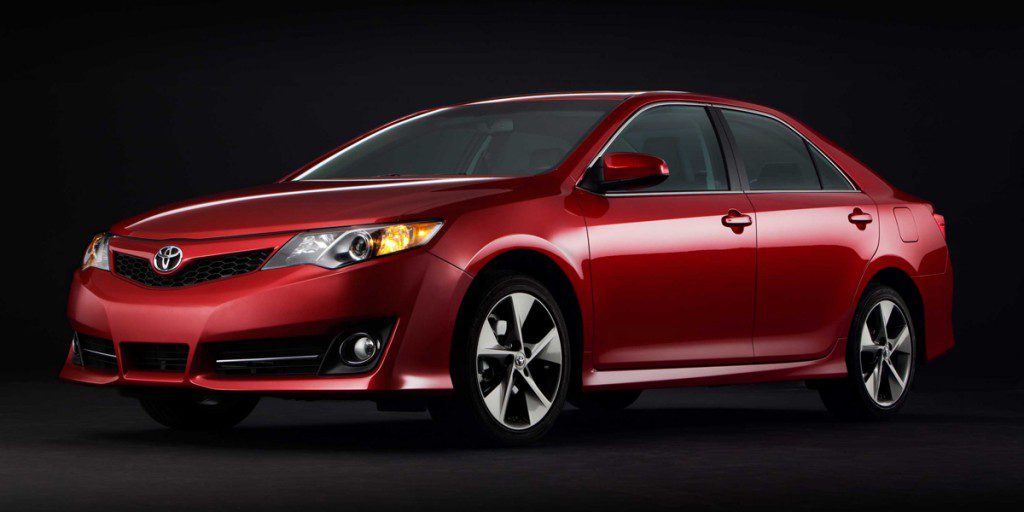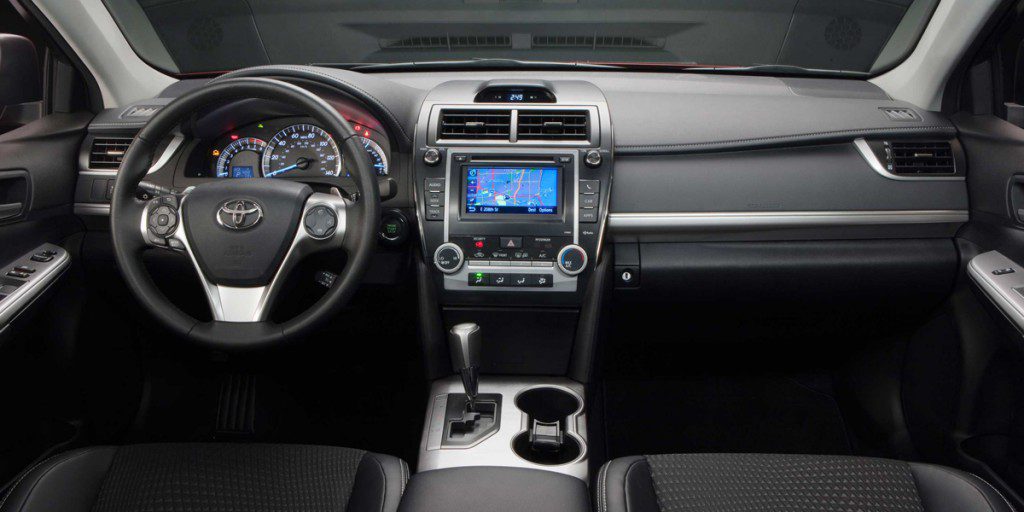| Midsize car; Built in USA |
|
|
| Good condition price range: $7,100 – $20,400* |

2012 Toyota Camry Hybrid

2012 Toyota Camry SE

2012 Toyota Camry SE

2012 Toyota Camry SE
| Pros: |
|
| Cons: |
|
There’s no secret to Camry’s long-running sales success: Toyota’s midsize simply satisfies more buyers more often than any other car on the market. The seventh-generation models are the best yet, combining useful improvements and new features with the time-tested virtues of smooth powertrains, good fuel economy, and quiet, roomy cabins. The Hybrid is arguably the most impressive Camry, blending fine real-world fuel economy with peppy acceleration and a laudably seamless powertrain, partly offset by a smaller trunk and higher prices when new. Camry is still pretty plain vanilla–even the sporty SE models–but it remains a compelling choice in a practical, pleasant, family-focused sedan that offers much to like and no surprises.
Overview
The 2012 Toyota Camry was redesigned with new styling, new features, and a significantly improved powertrain for the Hybrid model.
Four-cylinder models included the L, LE, SE, and XLE. The V6 was offered in SE and XLE trim. The Hybrid came as an LE or XLE.
The L was fairly well equipped, with tilt/telescopic steering wheel, cruise control, height-adjustable driver seat, split folding rear seat, power windows/locks/mirrors, digital-media player connection, USB port, and wireless cell-phone link. However, many might consider the step-up LE for its remote keyless entry, steering-wheel radio controls, and automatic headlights.
SE models were the sporty Camrys, and include heated power mirrors, a sport-tuned suspension, and larger tires (17s with the 4-cylinder, 18s with the V6). V6 versions also added a navigation system, rearview camera, power driver seat, keyless access and starting, and satellite radio. Most of those features were optional on the 4-cylinder.
XLE models added the usual luxury and convenience touches, including navigation system, rearview camera, satellite radio, keyless access and starting, and sunroof, many of which were also available as options on lower-level models. Other options included leather upholstery, heated front seats, blind-spot alert, and Toyota’s Entune infotainment system and Safety Connect assistance system.
Three powertrains were offered in the Camry: a 178-horsepower 2.5-liter 4-cylinder engine and 6-speed automatic transmission; a 268-horsepower 3.5-liter V6 and 6-speed automatic; and a Hybrid carrying a 2.4-liter 4-cylinder paired with an electric motor for a combined 200 horsepower, along with a CVT transmission that behaves much like an automatic.
Camrys are front-wheel drive.
In 2012, the regular 4-cylinder models were EPA-rated at 25 city/35 highway. The V6s rated at 21/30. The big improvement for 2012 was the Hybrid, which rated at 43/39 – up 4 to 12 mpg over the 2011 Hybrid. All Camrys use regular-grade gas.
These Camrys included all the expected safety features plus a driver knee airbag, and also offer a rearview camera, blind-spot alert, and Safety Connect assistance system.
Yearly Updates
| 2013 Camry The seventh-generation Camry entered its second year with very few changes. A rear-cross-traffic alert was added for SE models with the optional blind-spot monitor/lane-departure warning system, and the base L version joined other Camrys with a standard Display Audio touchscreen sound system. The only other news involved minor revisions to interior detailing and trim materials. |
| 2014 Camry Toyota didn’t introduce any significant changes for the 2014 Camry. |
| 2015 Camry The Toyota Camry got a substantial revamp for 2015 that included new bodywork (the only exterior panel carried over is the roof), a stiffer internal body structure, a redesigned and upgraded interior, new infotainment and safety features, and a sport-luxury XSE model. |
